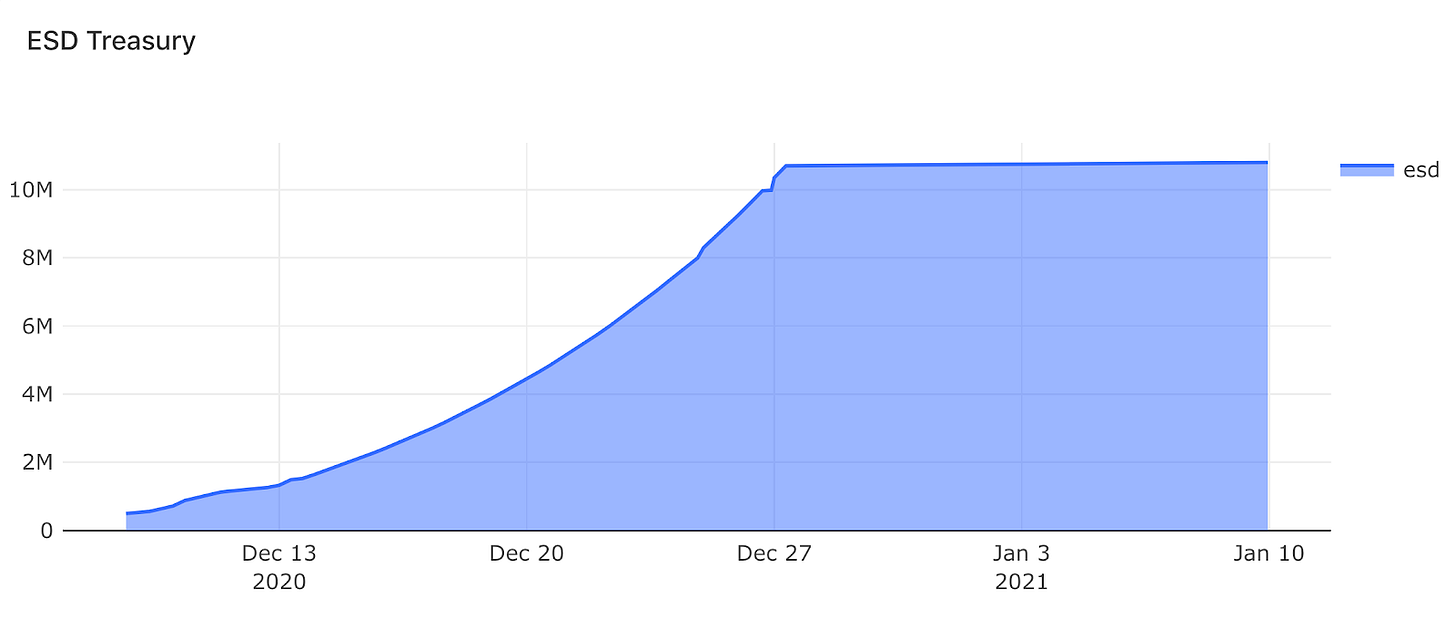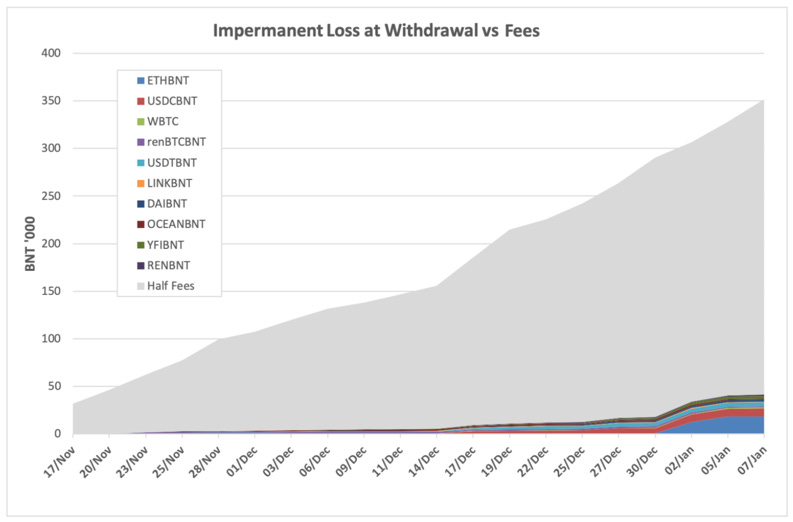Our Network: Issue #54
Coverage on SNX, ESD, BNT, and SUSHI.
ICYMI: Read Deep Dive #1 on the $1INCH token launch
This is issue #54 of the on-chain analytics newsletter that reaches nearly 7000 crypto investors every week 📈
✨ Together with our partners:
1inch, whose v2 offers the best rates by discovering the most efficient swapping routes across all DEXes—swap on the customizable new UI. And also Aave, where you can experience DeFi: Deposit, Earn, & Borrow on Aave.
Algorithmic Stablecoins
I wanted to flag a notable development for our readers. As of this week, we’re now covering algorithmic stablecoins starting with Empty Set Dollar. This class of decentralized stablecoins isn’t technically new (you may remember projects like NuBits and Basis), but there has been renewed interest and exciting developments in this sector over the past few months. If you’re a data-driven analyst who is interested in covering a new algorithmic stablecoin for Our Network (Fei Protocol comes to mind as one I’d like to see covered when it launches) — please reach out!
This week our contributor analysts cover DeFi: Empty Set Dollar, SushiSwap, Bancor, and Synthetix.
① Empty Set Dollar
Contributor: Jon Itzler, Research at Dragonfly Capital
Since launching on Aug. 25, Empty Set Dollar has been nothing short of an on-chain spectacle. The experimental project uses a single-token seigniorage shares model, aiming to peg to $1 according to the ESD:USDC Uniswap pool’s 8-hour TWAP oracle. When TWAP is above $1, the protocol expands supply by issuing newly minted ESD to DAO bonders and LP’s in a 77.5:20 ratio, with the goal of incentivizing sales of circulating supply in order to return the price to the peg. Supply has reached ~508.5M since inception.
When TWAP is below $1, the protocol issues ‘coupons’ as incentive to temporarily remove supply from circulation by burning ESD. Coupons are effectively 30-day Out-of-the-Money options betting on future expansion, where premium is priced by a protocol parameter called ‘debt’ - a descending auction based on size and duration of TWAP price below the peg. The protocol is currently in contraction with ~9.3M coupons outstanding.
Outstanding coupons are redeemable on a first-come-first-serve basis during expansions. Critiques of the current coupon system include the mispricing of option premium, the advantage to bots due to FCFS redemption, and the ‘waiting game’ that ensues where participants are inclined to wait until expansion looks exceedingly likely. Up to 69 ETH has been paid as transaction fee by bots aiming to call advance() first during redemption. 3rd party primitives have also emerged, namely Coupon Clipper and CPOOL, where coupon owners can place bribe orders to bots on-chain for priority redemption, or pool their coupons into a liquid basket of distressed options.
Recent progressions within the DAO include the introduction of a treasury that accrues 2.5% of supply expansion, which has grown to ~10.8M ESD to date, plans for a v2 which aims to transition the protocol to a fractional reserve model and switch coupons to a zero-coupon, “T-Bill”-esque bond structure, as well as EIP-16, a proposal recently committed by the DAO to separate coupon principle and premium.
② SushiSwap
Contributor: Lucas Outumuro, Senior Analyst at IntoTheBlock
SushiSwap has come a long way since the Chef Nomi incident, evolving into a fast-moving community-led DEX. Key protocol metrics have been growing steadily, with SushiSwap’s volume and liquidity reaching new highs in January. Over the last three months, SushiSwap’s liquidity and volume have grown by 480% and 1600%, respectively.
SushiSwap incentivizes liquidity providers and token-holders by charging traders a 0.30% fee on each trade, of which 0.25% goes to LPs and 0.05% goes to those staking xSUSHI on their platform. These fees have also grown significantly, surpassing $2 million in total daily fees ($350k to stakers) for the first time on January 11.
Being the two largest AMMs, Uniswap and SushiSwap are often compared to one another. After forking Uniswap, SushiSwap launched on its first day with 40% of the volume share between the two top AMMs. This declined sharply, then recovered and has now managed to sustain above 25% in 2021 thus far.
By using fees accrued from trading volume as revenues, we are able to apply traditional finance metrics to AMMs. The P/S ratio is particularly relevant as it puts into context a protocol’s valuation relative to the revenues it produces, in SushiSwap’s case provided to LPs and token holders. Despite SushiSwap's market cap growing over 600% in the last three months, its valuation relative to sales has actually decreased by 40% during the same time.
Finally, on a more micro level, liquidity providers of SushiSwap’s top pool (WBTC-ETH) have managed to earn more by ‘LPing’ than if they had held each asset separately. This has yielded an impermanent gain of 0.7% in addition to the 27% in yield farming rewards. More metrics on SushiSwap can be found on IntoTheBlock and for information on the methodology used feel free to check out this spreadsheet.
③ Bancor
Contributor: Nate Hindman, Head of Growth at Bancor Protocol
Version 2.1 of the Bancor protocol, launched 3 months ago, offers single-sided exposure and impermanent loss protection to AMM liquidity providers. Active study in impermanent loss is ongoing. The chart below depicts liquidity provider returns in the YFI/ETH pool on Uniswap. After accounting for swap fees, a Uniswap LP would have suffered -40% loss vs. +30% gains without IL. Source: amm.vav.me
The protocol has seen an 1000%+ increase in liquidity since impermanent loss protection launched in October, driving over $4.5M in annualized swap fees. More than 5K users (including several token treasuries) are currently providing single-sided liquidity, collecting fees and BNT liquidity mining rewards, free from the threat of IL.
The total cost of impermanent loss compensation paid to LPs to date is 41K BNT or $64,000 USD, whereas swap fees earned by the protocol and BNT liquidity providers are 350K BNT, or $560,000 USD. Protocol revenue is dominating the costs of impermanent loss protection at present and is generating profits for the protocol and BNT holders.
















